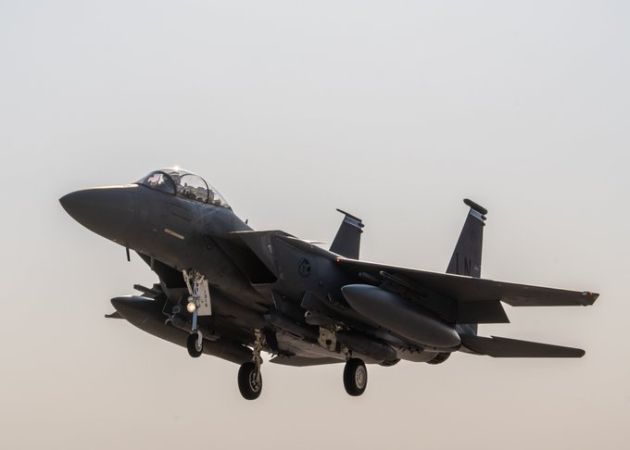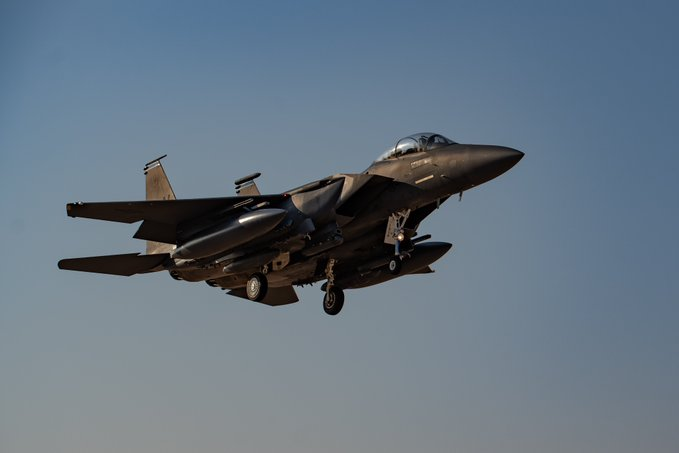F-15Es from the 492nd Fighter Squadron at RAF Lakenheath, U.K., have deployed to the Middle East, replacing Strike Eagles from Seymour Johnson Air Force Base, N.C., that recently wrapped up a rotation in the region.
U.S. Central Command noted the arrival of the Lakenheath F-15s on social media, and multiple officials confirmed the deployment to Air & Space Forces Magazine. On Nov. 1, the Pentagon announced it was sending additional forces to the Middle East to compensate for the upcoming departure of the USS Abraham Lincoln carrier strike group. U.S. officials previously told Air & Space Forces Magazine that the extra airpower would include F-15Es, but did not specify from where they would deploy.
The recently departed Seymour Johnson F-15Es first arrived in the Middle East in April, just before Iran launched a massive attack on Israel that included 300-plus one-way drones and missiles. Members of the 335th Fighter Squadron helped defend against that attack.
Then, in October, the “SJ” fighters had their deployment extended as the Pentagon sought to bolster its regional airpower following Israel’s killing of Lebanese Hezbollah’s leader Hassan Nasrallah, which led to Iran retaliating with a salvo of some 180 ballistic missiles.
A month later, those Airmen and fighters finally started returning home. Local spotters and flight trackers noted the F-15Es stopping over at Lakenheath on the way back. Several are still at the base in England.
Meanwhile, the Lakenheath jets are joining other F-15Es from Mountain Home Air Force Base, Idaho, in the Middle East. The 492nd Fighter Squadron arrives a year after its sister unit at Lakenheath, the 494th Fighter Squadron, first deployed to the region. The 494th also played a key role in repelling Iran’s April attack before returning in May after a seven-month deployment.
CENTCOM has significantly upped its airpower in recent months, deploying more F-16s, F-15s, and A-10s—plus KC-46 tankers—in October, then adding B-52 bombers earlier this month before the most recent F-15Es. These moves come as Israel considers how it will respond to Iran’s latest salvo and as U.S. officials stress their desire to avoid the conflict spiraling into a large-scale regional war.



